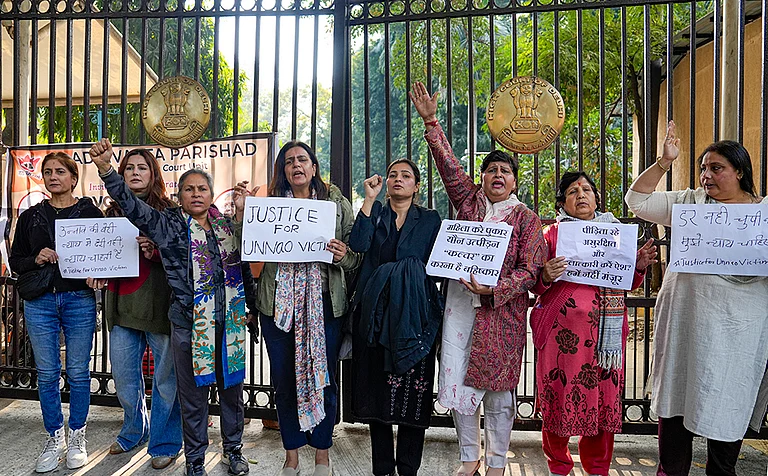Recently, an ad for a fairness cream which showed a couple fasting on Karwa Chauth was taken down after strong protests. If you thought that people were protesting because they found fairness creams or even Karwa Chauth regressive, you would be wrong. The reason that the ad was so objectionable, so offensive, was that it featured a lesbian couple fasting for each other on Karva Chauth. It was seen as an assault on our “ancient” culture, our glorious tradition.
But was homosexuality alien to the Indian experience? No. In the Mahabharata, a warrior in the Kurukshetra War was born a girl, but later transitioned into a man named Shikandi. Agni, the God of Fire, was married to both Svaha (a Goddess) and Soma (a God).
Homosexual and LGBTQ+ themes have been written about in ancient mythology and depicted in the designs of historical monuments for centuries. It has always been a part of India’s history. So why can’t we accept it even now?
In Pictures | Pride Month In India And The World
Queerness may have been part of our mythology but homosexuality used to be considered a crime punishable by torture – their hair used to be shaved off, their fingers removed, their caste revoked. In parts of India, it was even worse – girls and women were subjected to “corrective rape” as a “cure” for being lesbians, which was prescribed by pandits, and often even their own family members.
In the late 1800s, certain sexual activities were criminalized. These included non-consensual relationships, paedophilic relationships, and (surprise, surprise!) LGBTQ+ relationships as well.
It was only in September 2018 that being gay became legal once more. But legalisation is far from acceptance.
Studies show that even in a current urban India, one of the major factors of stigmatisation of homosexuality is the reaction from one’s own family members. In many families, members of the LGBTQ+ community are only accepted if they agree to “behave like heterosexuals”.
Even if they try to be accepting, parents treat questions or discussions about homosexuality as a hush-hush topic – something that children under a certain age are, in their opinion, too young to know about or understand. But why is someone too young to understand homosexual relationships but old enough to understand heterosexual ones?
Trans people don’t have it any better. Some doctors refuse to treat trans men and women, fearing that they might get “infected” with what they consider a disease. Vyjayanti Vasanta Mogli, an Indian trans woman, has spoken about her experience after coming out. She was forced by her family to undergo “corrective therapy” in a psychiatric hospital, which she described as somewhat like a prison with high walls and electric fences where she was treated as a criminal.
The lack of support from one’s family comes as a huge blow, especially since we live in a society with a rigid social structure. You might have heard of the phrase “blood is thicker than water”. What you might not know is that the complete phrase is in fact “blood of the covenant is thicker than the water of the womb”, meaning that bonds forged by choice are so much stronger than the ones you are born with. You can make your own family that accepts you for who you are.
While the legalisation of the LGBTQ+ community is certainly a step towards acceptance, we still have a long way to go. If you know someone who is a member of the LGBTQ+ community, please try to make them feel accepted. You never know how far some kind words can go.
(The author is a student of grade 11 at The Shri Ram School in Gurgaon. She is an editor with 'Girl Up Unity', a United Nations initiative and is the president of The Shri Ram School Girl Up Club. She writes on issues related to the rights of women and children and gender equality and neutrality.)





















